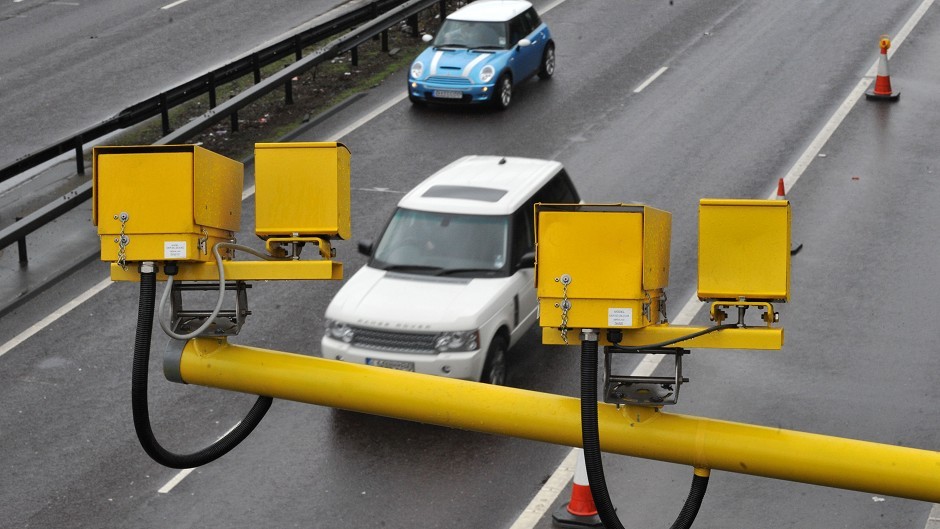The A9 average-speed cameras were under fire again last night amid claims there has been a year-on-year increase in the rate of fatal accidents on the notorious road.
Figures released yesterday also revealed the number of people caught breaking the limit over the past three months has quadrupled compared with the first three months after the devices went live.
Campaigners have again challenged the Scottish Government’s claim the controversial “yellow vultures” will improve safety on the Inverness-Perth trunk road.
But transport chiefs insisted the £2.5million system was already proving its worth and changing motorists’ behaviour for the better.
New police statistics indicate that the number of vehicles speeding on the road has dropped from one in three to one in 15 since the cameras were introduced in October.
In the first three months after the devices were switched on, 298 drivers were caught breaking the limit.
But the figure for the last three months soared to 1,466 – an increase of 385%.
But Mike Burns, of the A9 Average Speed Cameras Are Not the Answer campaign, claimed: “Journey times are taking far too long and we’ve had more deaths this year than in the same period last year.
“We’ve had three deaths. They will say that has nothing to do with speed cameras. What they forget is that with the death statistics they used to justify the introduction of speed cameras, most had nothing to do with speed.”
The three fatal accidents remain the subject of police investigations.
A Transport Scotland spokeswoman said: “We will continue to do all we can to make the A9 safer.
“Traffic volumes are rising, journey times are more reliable and fatal accidents are not, as has been suggested, at an all-time high.”
The figures revealed that between October 28 last year, when the cameras were introduced, and April 20 a total of 1,744 vehicles broke the speed limit.
That, according to Transport Scotland, was “an extremely high level of compliance when compared to previous enforcement methods”.
It said the figure equated to “an average of fewer than 10 per day across the whole of the enforcement area based on an average daily traffic volume of over 10,000 vehicles between Perth and Inverness, and 24,000 vehicles between Dunblane and Perth”.
A9 Safety Group chairman, Stewart Leggett, said: “The monitoring equipment on the route clearly indicates there has been a significant shift in driver behaviour.
“More importantly, the number of vehicles travelling at excess speed – 10mph above the limit – is down from one in 10 before installation and has been maintained at a level of around one in 250 since the cameras were introduced.”
He added: “There has been a rise in vehicles exceeding the thresholds, but this is not unexpected.”
Research carried out by specialist Aecom on behalf of Transport Scotland concluded there had been a reduction in unsafe and undesirable driving, and an increase in motoring “enjoyment, satisfaction and safety” since the cameras were introduced.
Police will reveal next week how many motorists had been fined as a result of being caught on camera on the A9.
The system was controversial before it was installed, with critics claiming it would have little impact on safety and increase journey times, while disrupting traffic flow on the road.
The Scottish Government has committed £3billion to dualling the full length of the route between Inverness and Perth.
